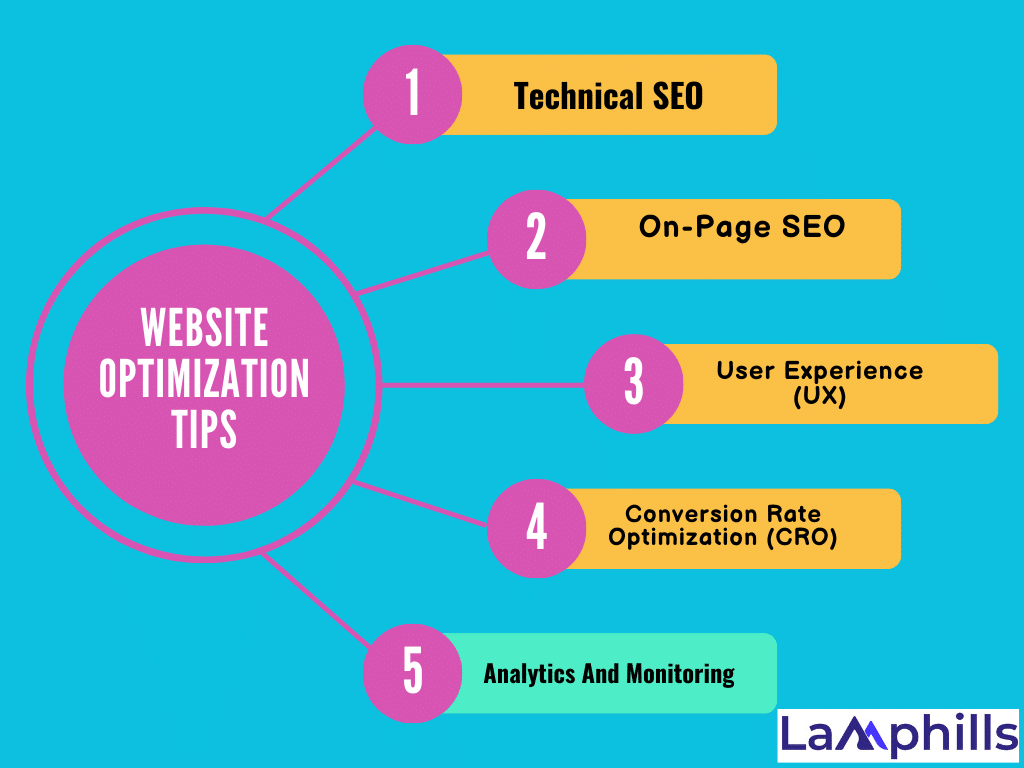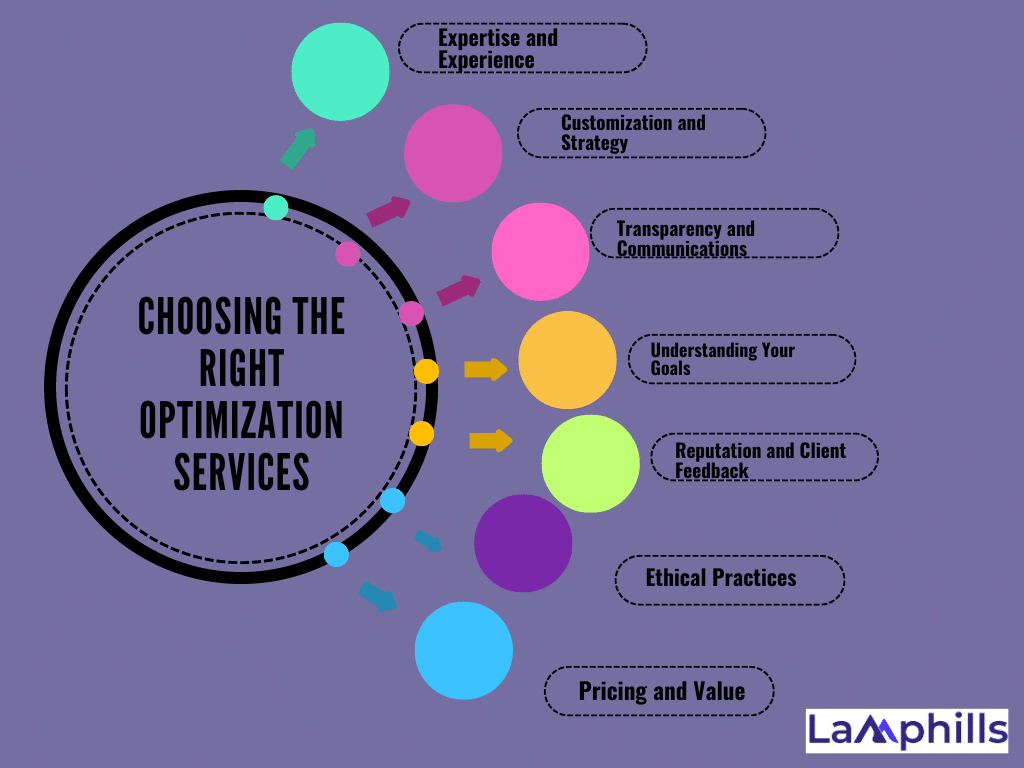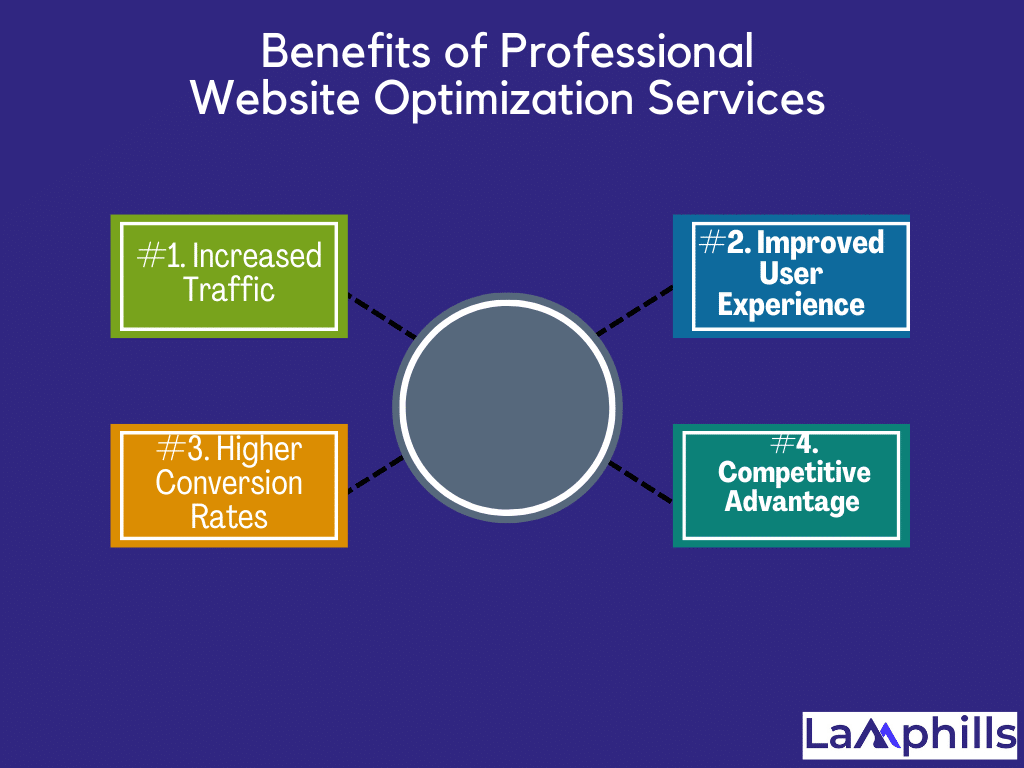Allow me to take you back to a few years prior when I was just getting started with website optimization? My company associate and I had recently introduced a new website. It was frustrating when we noticed that traffic was arriving at a snail’s pace despite our best efforts. It was similar to having a big opening with no guests. Yes, it is frustrating. Now, the question is, how do you optimize your website to get rid of these issues? You can’t. This is because no one can. However, you are capable of improving! In this post, I’ll go over some of the top website optimization tools and services and how they can help your business succeed.
Key Takeaways
- Effective website optimization isn’t one-size-fits-all. Tailoring strategies to the unique needs and goals of your business is essential. Whether it’s improving site speed or refining user experience, customization based on data and specific business objectives can significantly impact your success.
- Prioritizing user experience is fundamental. As demonstrated by personal anecdotes, optimizing for site speed, mobile-friendliness, and intuitive navigation can greatly enhance visitor satisfaction, reduce bounce rates, and increase engagement. A seamless user experience is key to converting visitors into loyal customers.
- Utilizing the right tools can make a significant difference. Tools like Hotjar for user behavior analysis, Google Analytics for performance tracking, and GTmetrix for site speed assessment are vital for understanding and improving various aspects of your site.
- The success of your optimization efforts heavily depends on choosing the right service provider. Look for providers with proven expertise, a customized approach, transparent communication, and ethical practices. A provider who understands your specific goals and can deliver tailored solutions is crucial for achieving optimal results.
What Is Website Optimization?
Let’s clarify our terms before we go any further. Optimizing a website is similar to tuning an automobile. Even with the most extravagant car, it won’t function properly if the proper settings aren’t followed. Similar to this, website optimization services entail adjusting different elements of your website to guarantee optimal performance.
Website traffic, conversion rates, and usability are just a few of the metrics that are improved by optimizing your website. Now, the fundamental purpose of website optimization is to make sure your website facilitates a seamless digital trip, even though you can have many KPIs and objectives for your optimization efforts. By doing this, the ideal environment is created for website visitors to become satisfied clients.
To give you an indication of what these services are capable of and what to look out for, let’s take a closer look at the various website optimization tips.
Website Optimization Tips

So, what are the vital services that will transform your website from a flop to a dynamo? Let us break them down. To help you get started with website optimization, here are some general guidelines that every web team should be aware of.
#1. Technical SEO
This SEO is the maintenance you do to keep it working smoothly.
- Site Speed: Several years ago, I had a client whose website took forever to load. They were losing visitors left and right. They experienced a significant boost in traffic and user engagement after optimizing their site speed, which included compressing pictures and exploiting browser caching. Tools such as Google PageSpeed Insights might be extremely useful in this situation.
- Mobile Optimization: With more people surfing on their phones than ever before, having a mobile-friendly website is essential. I recall one client who saw their bounce rate reduce by 40% after we made their website responsive. It’s worth every penny.
- Site Architecture: Think of this as your website’s plan. A well-structured website allows search engines to crawl and index your pages more efficiently. It also makes it easier for users to navigate your website.
#2. On-Page SEO
On-page SEO is similar to the spice in your food. It must be just correct to complement the flavor of your website’s content.
- Keyword Optimization: Let’s say you run a bakery. Incorporating keywords like “best chocolate chip cookies” into your content helps search engines understand what you’re all about. But remember, don’t stuff keywords—be natural and relevant.
- Meta Tags: These are like the headline and teaser for your website. A catchy title and a compelling meta description can significantly boost your click-through rates.
- Content Quality: I once worked with a client who had great products but mediocre content. After we revamped their blog with engaging, informative articles, their traffic and conversions improved noticeably.
#3. User Experience (UX)
User experience is like the vibe of a physical store. A good experience keeps visitors coming back.
- Navigation: Imagine trying to find a product in a cluttered store. Frustrating, right? A well-organized menu and clear pathways make a huge difference. One of my clients saw a 25% increase in page views after we simplified their site’s navigation.
- Visual Design: An aesthetically pleasing site can captivate visitors. It’s like the difference between a beautifully designed store and a chaotic one. Consistency in design elements like fonts and colors can make your site more inviting.
- Accessibility: Ensuring your site is accessible to everyone, including those with disabilities, is crucial. Simple changes like adding alt text to images can make a world of difference.
#4. Conversion Rate Optimization (CRO)
CRO is about making sure that visitors who come to your site don’t just browse but also take action.
- Call-to-Action (CTA): Think of CTAs as your site’s way of guiding visitors. A well-placed, compelling CTA can significantly boost your conversion rates. For instance, we helped one e-commerce site improve its sales by redesigning its CTA buttons to be more prominent and persuasive.
- Landing Pages: A well-optimized landing page can turn a casual visitor into a loyal customer. We once created a dedicated landing page for a client’s seasonal promotion, which resulted in a 50% increase in sign-ups.
- A/B Testing: This is like experimenting with different recipes to find the best one. Testing different versions of a page to see which performs better can lead to significant improvements in your conversion rates.
#5. Analytics And Monitoring
Once you’ve implemented your optimization strategies, it’s time to track and measure their impact.
- Performance Tracking: Tools like Google Analytics are invaluable for monitoring site performance. You can track metrics like bounce rate, average session duration, and conversions to see how well your site is doing.
- User Behavior Analysis: Understanding how users interact with your site helps in making informed decisions. For example, heatmaps can show where users click most often, helping you optimize your site layout.
- Regular Audits: Just like your car needs regular maintenance, your website needs periodic audits. These audits can help identify and fix issues before they become major problems.
Choosing the Right Optimization Services

Choosing the correct partner for your website optimization might mean all the difference. It is not enough to simply hire someone who can complete the jobs; you must also select a provider that shares your company’s goals and values. Here’s a detailed guide that will help you make an informed decision:
#1. Expertise and Experience
Look for vendors who have completed previous projects successfully. This isn’t just about showy claims; look at their portfolio and case studies.
Also, ensure that the provider has the technical skills required for advanced optimization jobs. This includes expertise in areas such as technical SEO and mobile optimization and site speed improvements. You might want to ask about their familiarity with tools and technologies that are crucial for optimization.
#2. Customization and Strategy
Your business is unique, and so should your optimization plan. Look for companies that provide personalized solutions rather than a cookie-cutter approach. They should be willing to customize their strategies to your requirements, objectives, and obstacles.
In other words, make sure their strategies are based on data and insights, not guesswork. They should use analytics and performance data to guide their decisions and constantly improve their strategy. Inquire about the technologies they use for data analysis and how they incorporate findings into the optimization process.
#3. Transparency and Communications
A good service will keep you updated on their progress. This includes regular updates on what they’ve accomplished, what’s next, and the impact of their work your site’s performance. Clear and consistent communication helps build trust and ensures that you’re always in the loop.
Also, request detailed reports on performance metrics, progress, and ROI. These reports should be easy to understand and should provide actionable insights. For example, if they report improvements in traffic, they should also explain how these improvements align with your business goals.
#4. Understanding Your Goals
The vendor should understand and support your specific business objectives. Whether you want to boost traffic, improve conversion rates, or improve user experience, their techniques should help. During the selection process, define your objectives clearly and assess how well they understand and intend to address them.
Check whether the provider’s services can be scaled as your firm expands. This is because optimization requirements can change, and your partner should be ready to adapt their strategy to match your evolving needs. For example, if your site grows, you may require more advanced SEO tactics or additional CRO services.
#5. Reputation and Client Feedback
Look for feedback and testimonials from previous customers. Positive feedback and recommendations might offer information about the provider’s dependability and efficacy. If feasible, contact previous or present clients to obtain firsthand reports of their experiences.
Determine whether the provider has received any industry awards or recognitions. This might be a reliable measure of their credibility and skill. Recognition from respectable industry associations can indicate that they are well regarded in their profession.
#6. Ethical Practices
Ensure that the provider follows ethical practices and meets industry standards. Avoid those that employ black-hat SEO strategies or shortcuts, which may provide momentary gains but might result in penalties or long-term damage.
Consider whether they are committed to sustainable and ethical business methods. This involves respecting user privacy and ensuring that all optimization strategies comply with relevant regulations, such as GDPR.
#7. Pricing and Value
Understand their pricing structure and make sure there are no hidden fees. A good provider would provide transparent pricing and explain what is included in their services.
Determine the value you’re receiving for your investment. Sometimes the cheapest option isn’t the best, and the most expensive isn’t always the most efficient. Look for a provider who provides a good combination of quality and pricing, and who clearly understands how their services will benefit your company.
Finally, choosing the correct optimization service provider is more than simply selecting a name from a list. It’s important to find a partner who understands your business, shares your goals, and can provide unique, effective solutions. Considering these crucial aspects, you can make a more informed decision and set your website—and your business—up for success.
Top Best Website Optimization Services
Now the question is, which website optimization service(s) is right for you? We know that there are many more website optimization services out there, but I believe that these are some of the best services! That being said, the best way to choose which website optimization service(s) your company wants to use is simply by giving them a whirl. Hopefully, this overview will help you make a decision about which website optimization service(s) best fits your business!
#1. Hotjar
Hotjar is a simple all-in-one tool for understanding and measuring user activity. The comprehensive heat map tool allows you to trace users’ travels around a page, revealing where they lose interest and where they are drawn in. It also allows you to record and monitor user actions for further in-depth analysis. However, keep in mind that UX optimization tools like these will not increase user experience magically; therefore, you will need to regularly test and retest! Pricing: $99 (500 daily sessions) / $189 (1,500) / $289 (2,500)
#2. Mopinion
Mopinion is a quantitative and qualitative feedback analytics application that allows you to collect and evaluate online user input. They provide feedback solutions for mobile applications, websites, and emails. We also offer configurable dashboards and text analytics, giving you detailed insights into the user experience and, of course, the ability to enhance it! Mopinion also provides connections with project management systems such as Asana and Trello. Furthermore, you can combine Mopinion with major CRM systems such as Salesforce and Microsoft Dynamics. Pricing: €199 (Growth) / €499 (Turbo) / Upon request (Enterprise)
#3. Google Analytics
Google Analytics is a free website optimization service and analytics tool with which you can analyse and track the performance of your website or app. There is also the opportunity to connect Google Analytics with other Google platforms, like Google Ads. It also offers a premium version with more details, which is designed for enterprise companies. One downside — however — is that it takes a lot of time to implement this tool, and it may be difficult to understand the data.
Pricing: Free
#4. GTmetrix
GTmetrix allows you to compare the speed of your website to that of your competitors using Google PageSpeed and Yahoo! Yslow. GTmetrix explains why your webpage(s) is slow and makes tips to improve the speed. You can test your webpage from many locations. Their reports summarize critical performance indicators. They also provide a free version. If you wish to analyze your speed performance on mobile devices, you’ll need to upgrade to one of the commercial editions. In addition, they offer a free WordPress plugin for evaluating WordPress websites. Pricing: Free (basic) / $14,95 (bronze) / $49,45 (silver) / $149,95 (gold) / upon request (custom)
#5. SEMrush
SEMrush is an SEO tool that offers many features, like keyword research, backlink tracking, content analysis, social media tracking, on-page SEO tracking, and rank checking. They also provides competitor tracking and research. They also have a mobile app for iOS and Android that lets you follow all your position-tracking campaigns. Moreover, this tool has a social media poster Chrome extension, which allows you to schedule your social media posts. provide. Pricing: $99 (pro) / $199 (guru) / $399 (business) / upon request (enterprise)
#6. Optimizely
Optimizely enables you to test multiple website variants. This website optimization solution also provides a web and full-stack platform that can be utilized independently or simultaneously. Their online experiment platform is designed for marketing teams and does not require coding. In contrast, their full-stack platform is more complex, featuring an open-source SDK and pluggable components. Optimizely is also accessible for mobile, television, and Internet of Things applications. Pricing: upon request
#7. Ubersuggest
Ubersuggest is a free keyword tool that provides keyword research and promises to help you ‘win the SEO game’. This tool’s best features are keyword analysis and integration with web analytics tools. Ubersuggest provides a good overview of SEO performance, including the ability to spot broken links, monitor page loading times, and track competitors. Neil Patel Digital provides a paid edition that includes more advanced search engine marketing and SEO features. Ubersuggest, unlike some of its competitors, does not export or generate automatic reports. Pricing: Free / €29 (Individual) / €49 (Business) / €99 (enterprise)
#8. Ahrefs
Ahrefs is an extremely useful, industry-leading data tool that helps you accelerate the growth of organic search traffic to your website. This toolkit contains various data analysis and optimization tools, all of which are included in the same pricing levels. This implies that you will not miss out on any vital features, regardless of your budget. Their content research tool lets you utilize keywords to see what relevant content has performed well in organic searches or on social media. There is also a comprehensive dashboard to help you manage all of your tasks at once. Pricing: $99 (per month) / $7 (seven-day trial)
#9. Yoast SEO
Yoast SEO is a popular WordPress plugin with a number of useful functions, including keyword optimization, readability checks, page previews, duplicate content protection, and other content analytics. While this application is incredibly user-friendly, it falls short in some aspects, such as its heavy reliance on suggestions and recommendations. For example, users are frequently alerted of inaccurate suggestions, such as the usage of passive voice. But do not be discouraged. For beginners, this can be a useful SEO tool for content optimization. Pricing: Choose from the Free package or Yoast SEO Premium (€89ex VAT) for 1 site — including 1 year of free updates and support.
#10. Serpstat
One of the fastest growing SEO tools on the market, Serpstat provides comprehensive search analytics data. This all-in-one platform has over 20 tools, some of which include: backlink analysis, competitor analysis, keyword research and many more. For technical users, the website audit tool is extremely in depth. This tool provides users with an extensive list of SEO metrics, analysis, and tips. On the other hand, the content marketing tools sadly don’t live up to some of their other features. Pricing: $69 (Lite Plan) / $149 (Standard Plan) / $299 (Advanced Plan)
Benefits of Professional Website Optimization Services

Investing in professional website optimization services can be a game-changer. Here’s how:
#1. Increased Traffic
By optimizing your site, you can improve your search engine rankings, which leads to more organic traffic. One client saw a 60% increase in traffic after we implemented a comprehensive SEO strategy.
#2. Improved User Experience
A well-optimized site is user-friendly and enjoyable to navigate, which keeps visitors engaged and encourages them to return.
#3. Higher Conversion Rates
Optimizing for conversions means turning visitors into customers. Better CTAs, effective landing pages, and streamlined navigation all contribute to higher conversion rates.
#4. Competitive Advantage
In a crowded market, optimization can give you the edge over competitors. A well-optimized site not only attracts more visitors but also helps you stand out in search engine results.
How much should I charge to optimize a website?
Most businesses have budgets that range from $500/month to $10,000/month.
What is the goal of website optimization?
Optimization improves the efficiency of the website at converting visitor traffic into email subscribers, readers, or paying customers. In
How often should you optimize your website?
In general, we recommend consistently tracking your content’s organic performance and identifying optimization opportunities every 3-6 months. New
Conclusion
Website optimization is more than just having your site seem pretty; it’s also about making it perform efficiently to help you reach your business objectives. The correct optimization services help your organization achieve substantial success by improving site speed and mobile friendliness, as well as improving user experience and increasing conversions.
So, if you’re ready to transform your site from good to exceptional, think about investing in professional website optimization services. It’s a move that can pay off handsomely, allowing you to attract more visitors, please your customers, and eventually grow your business.
Thank you for joining me on this path of website optimization. If you have any problems or need assistance with your website, please do not hesitate to contact us!






